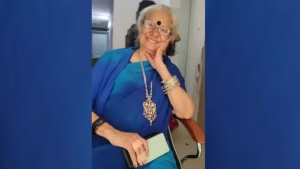Asia’s First Woman Loco Pilot Surekha Yadav to Attend PM Modi’s Oath Ceremony

Surekha Yadav is a pioneering figure in the railway industry, making history as Asia’s first woman loco pilot in 1998. At 57, this Mumbai resident has shattered numerous glass ceilings for women in India’s railway sector. Her latest achievement came in 2021 when she became the first female loco pilot of the semi-high-speed Vande Bharat Express train, successfully piloting it between Solapur station and Chhatrapati Shivaji Maharaj Terminus (CSMT) in Mumbai.
On June 7, 2024, a Central Railway official announced that ten female loco pilots, including Yadav, will attend Prime Minister Narendra Modi’s swearing-in ceremony for his third term on June 9. Among these notable women is Aiswarya S Menon of Southern Railways, who operates Vande Bharat and Jan Shatabdi trains.
Surekha Yadav hails from Satara in western Maharashtra and has an illustrious career marked by numerous accolades at both state and national levels. After her groundbreaking achievement as Asia’s first female loco pilot in 1998, she continued to break barriers. In 2000, she became the first female operator of the ‘Ladies Special’ train for Central Railways.
In 2021, Yadav further solidified her legacy by leading the Mumbai-Lucknow Special train with an all-women crew on International Women’s Day. Her role in operating the Deccan Queen alongside assistant loco pilot Sayali Sawardekar showcased her leadership and expertise. Railway Minister Ashwini Vaishnav congratulated Yadav for her groundbreaking achievements and highlighted the importance of “Nari Shakti”.
Surekha Yadav’s remarkable journey is an inspiration to aspiring women in the railway industry and beyond. Her dedication, professionalism, and trailblazing spirit exemplify the limitless potential of women in traditionally male-dominated fields. As she continues to break barriers and make history, Yadav’s legacy will undoubtedly leave an indelible mark on India’s railway landscape.
Re-reported the article originally published in She the people.








